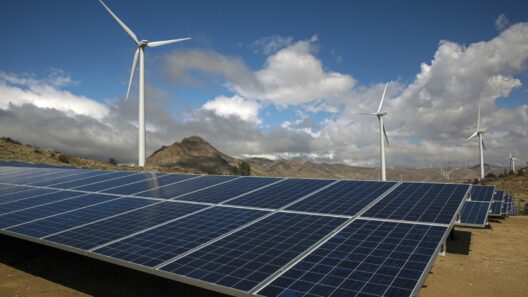The summer months often herald a relentless increase in temperatures, prompting a surge in energy consumption as households turn to air conditioning and cooling technologies. While these methods provide immediate relief, they also contribute significantly to our overall energy expenditure and environmental footprint. Therefore, adopting strategies to conserve energy during summer is paramount, not only for individual households but for the planet as a whole.
To commence, an understanding of the interplay between energy consumption and climate impact unveils the importance of conservation. Traditional energy sources, frequently employed to produce electricity, are predominantly fossil fuels, which release greenhouse gases that exacerbate climate change. Hence, implementing energy-saving practices during summer is not merely a personal virtue but a collective responsibility. Such actions can lead to profound environmental benefits, mitigating the instabilities of climate systems.
One primary strategy to curb energy consumption is to optimize the cooling systems within your home. Air conditioners, while beneficial, often operate inefficiently. Hence, ensuring that your cooling unit is well-maintained can dramatically improve its efficiency. Regularly replacing filters and cleansing the coils helps the system function effectively, reducing the need for excessive energy. Additionally, consider the installation of programmable thermostats. These devices allow for the adjustment of temperatures according to specific schedules, thereby minimizing energy use when the home is unoccupied.
Furthermore, one can explore the potential of natural ventilation. Utilizing windows and doors strategically can encourage cross-ventilation, which cools the home without relying on mechanical cooling systems. During the cooler hours of night, open windows to invite in fresh air and then close them, along with blinds or curtains, during the day to trap the coolness inside. This simple approach evokes an ancient architectural technique that harnesses nature’s resources and significantly slashes the energy needed for artificial cooling.
In addition to managing cooling systems, the role of insulation cannot be overlooked. Enhancing your home’s insulation effectively regulates indoor temperatures by resisting heat transfer. Insulating walls, attics, and floors keeps interiors cool by reducing the heat that permeates the home during scorching summer days. Similarly, sealing cracks and gaps around doors and windows prevents the unwanted influx of warm air. This approach not only conserves energy but also improves comfort, leading to an enhanced quality of life.
Light management is another pivotal aspect of energy conservation during summer. Traditional incandescent bulbs drastically increase energy consumption; hence, consider switching to energy-efficient LED or CFL bulbs. These alternatives use up to 75% less energy and have a far longer lifespan. Additionally, optimizing natural lighting opens a pathway to further savings. During summer, exploit daylight to its maximum potential—keep blinds drawn during the hottest parts of the day and utilize reflective surfaces to amplify natural light in the home.
For households with gardens, the practice of strategic landscaping offers an eco-friendly method to conserve energy. Planting trees or installing green walls can provide natural shade, reducing the heat absorbed by your home. Strategically placed vegetation can cool the air around your home and mitigate heat concentration, which, in turn, reduces the reliance on air conditioning. Such landscaping practices not only beautify the home but also create a harmonious relationship with the environment.
The role of behavioral changes in energy conservation is equally compelling. Adopting simple lifestyle modifications can yield significant energy savings. For instance, wearing light, breathable fabrics can reduce the immediate need for cooling. Additionally, establishing designated ‘cooling-free’ periods, where electronic devices and lights are turned off, fosters mindfulness about energy use. Integrating energy conservation into daily routines not just elevates individual awareness but nurtures an ethos of sustainability.
Moreover, awareness about peak energy pricing can influence consumer behavior dramatically. Many electricity providers implement variable pricing based on demand, often escalating during peak hours. By adjusting energy usage patterns—for instance, running laundry machines or dishwashers during off-peak hours—households can maximize their savings and reduce the strain on the grid. This knowledge instills a sense of agency over energy consumption and serves as compelling motivation to adopt more ecological habits.
Solar energy harnessing becomes an exciting prospect for those looking to make a lasting impact. The use of solar panels translates sunlight into usable electricity, decreasing reliance on grid energy and significantly minimizing carbon footprints. Government incentives and decreasing installation costs make this a viable option for many homeowners. Furthermore, utilizing solar energy during peak sunlight hours coincides with pressing demands, catering specifically to summer energy needs while facilitating long-term savings.
Lastly, local community engagement can amplify individual efforts in energy conservation. Communities that collectively embrace sustainability initiatives—such as community gardens, energy-sharing programs, and educational workshops—can maximize their impact. Not only does collective action yield broader results, but it also fosters a culture of accountability and shared responsibility, reinforcing the significance of protecting our environment.
In conclusion, conserving energy during summer is a multifaceted approach that encompasses technological, behavioral, and community-oriented strategies. By refining cooling systems, optimizing insulation, managing lighting, altering personal habits, exploring solar energy, and engaging with the community, individuals can effectively combat surging energy demands while nurturing the planet. The inexorable connection between energy conservation and environmental stewardship is undeniable, underscoring the importance of collective action in addressing climate change challenges. The effort to beat the heat without wasting power not only prepares us for a sustainable future but also enriches our present experience through enhanced comfort and ecological responsibility.








